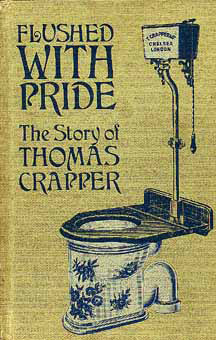




Back to the Victorians calendar



 A man called Matthew Webb had been inspired to try to swim the English Channel between England and France. The distance was about 21 miles. On August 24 1775 Webb dived into the water near Dover and set off swimming breaststroke. He had covered himself in porpoise oil to try to keep warm. He also had three escort boats alongside him. 21 hours and 45 minutes later he landed near Calais, despite having been stung by jellyfish on the way, It is said that because he zigzagged his way across, he may have swum nearly 40 miles.
A man called Matthew Webb had been inspired to try to swim the English Channel between England and France. The distance was about 21 miles. On August 24 1775 Webb dived into the water near Dover and set off swimming breaststroke. He had covered himself in porpoise oil to try to keep warm. He also had three escort boats alongside him. 21 hours and 45 minutes later he landed near Calais, despite having been stung by jellyfish on the way, It is said that because he zigzagged his way across, he may have swum nearly 40 miles.
 After that he became famous as the first person to have been known to swim the channel. He could be said to be the first sportsman to take advantage of his fame as he had a brand of matches named after him, some pottery memorabilia and he wrote a book called “The Art of Swimming”.
After that he became famous as the first person to have been known to swim the channel. He could be said to be the first sportsman to take advantage of his fame as he had a brand of matches named after him, some pottery memorabilia and he wrote a book called “The Art of Swimming”.
Sadly this art deserted him some eight years later when he tried to swim through the whirlpool rapids at Niagara Falls. It is said he hit his head on a rock and drowned. Matthew Webb trained for his cross channel swim by swimming in the Thames, before the sewer systems were working. I'm sure when he said he would swim the channel, many poo-pooed his idea with good reason.
With poo still much in our minds you may remember that in 1589 Sir John Harington had invented the first flushing toilet. The idea didn't catch on that quickly, not at all among the poor and people still pee-ed and poo-ed in cess-pits and earth closets (I hope you're not eating while reading this).  A cesspit is really just a hole in the ground, and an earth closet much the same except after pooing you pulled a lever and clay covered your.....waste.
A cesspit is really just a hole in the ground, and an earth closet much the same except after pooing you pulled a lever and clay covered your.....waste.
In 1775 an English inventor Alexander Cumming was granted the first patent for a flush toilet. He designed his with an S-shaped pipe below the bowl that used water to create a seal preventing sewer gas from entering through the toilet. Then Thomas Crapper manufactured one of the first widely successful lines of flush toilets and he developed the ballcock which improved the tank-filling mechanism and is still used in toilets today.
Soon toilets were everywhere, even if in the slums of London they might be shared by up to 300 people. In 1883, Thomas Twyford introduced the first all-ceramic, free-standing, pedestal closet. It was called the Unitas. Public toilets were also available and the cost was one penny, hence the saying I am going to spend a penny when needing to go to the loo. This cost continued until 1971.
Forward to 1876AD

